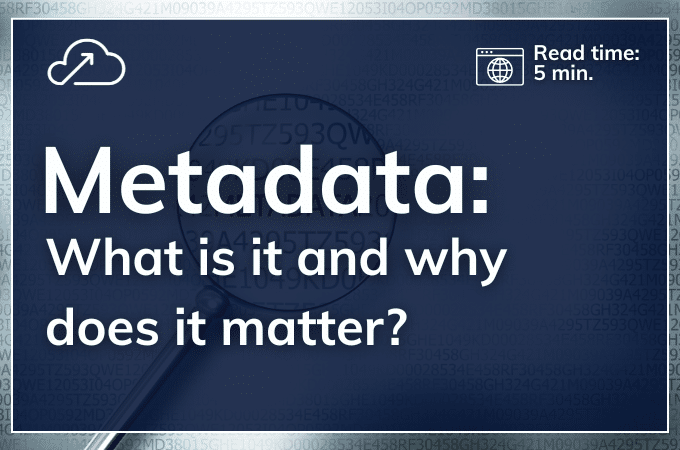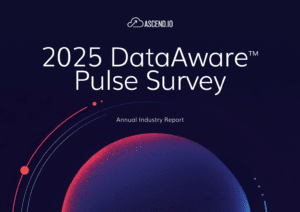Metadata is the information that provides context and meaning to data, ensuring it’s easily discoverable, organized, and actionable. It enhances data quality, governance, and automation, transforming raw data into valuable insights.
Imagine a library with millions of books but no catalog system to organize them. Chaos, right? This is what managing data without metadata feels like. Often described as “data about data,” it is the unsung hero in data management that ensures our vast amounts of information are not only stored but easily discoverable, organized, and actionable.
Effective metadata management is no longer a luxury—it’s a necessity. It enhances data quality, governance, and optimization, making data retrieval more efficient and enabling powerful automation in data engineering processes.
As practitioners using metadata to fuel data teams, we at Ascend understand the critical role it plays in organizing, managing, and optimizing data workflows.
In this blog post, we’ll explore what metadata is and how it empowers data teams.
What is Metadata?
Metadata is essentially the information that provides context and meaning to other data. It acts as a guide, helping us understand the who, what, where, when, why, and how of data. Without this information, data can be ambiguous, hard to find, and even harder to use effectively.
It can include details such as the creation date, file size and type, and modification history, among others. For example, table metadata might include column descriptions, data types, and the relationships between different data sets. This additional layer of information makes it easier to organize, search, and understand the underlying data.
Metadata is vital to ensure data quality and governance compliance. But it can also fuel automation and optimization.
The Role of Metadata in Data Management
Metadata is the backbone of effective data management, playing a crucial role in organizing, maintaining, and utilizing data. Leveraging details about data and how it is processed enhances several key aspects of data management:
- Ensuring Data Quality
Metadata ensures data accuracy and consistency by maintaining information about data sources, updates, and validation rules. This helps in identifying and rectifying errors, leading to high-quality data. For example, timestamps verify data freshness and reliability. It also enables data profiling, analyzing data to understand its structure and quality. This helps identify anomalies and patterns, maintaining high data integrity standards essential for informed business decisions. Additionally, this enables anomaly detection, highlighting irregularities in data that could indicate errors or potential issues.
- Enabling Data Governance
Metadata is vital for compliance and data security. It provides information on data ownership, access controls, and usage policies, helping organizations adhere to regulatory requirements. Tracking user actions and changes creates essential audit trails to support data classification and security measures, safeguarding sensitive information and mitigating risks.
- Identifying Data Optimization Opportunities
Metadata on pipeline performance is crucial for identifying optimization opportunities. By analyzing performance metrics, organizations can pinpoint bottlenecks and inefficiencies, enabling targeted improvements that enhance overall system performance and reduce costs.
- Fueling Data Automation
Metadata-driven automation streamlines data engineering processes by performing tasks such as data pipeline orchestration and job optimization. These automated workflows leverage information about code and data to ensure consistent and reliable data operations. This allows data engineers to focus on strategic tasks, improving productivity, and operational efficiency.
Types of Data to Collect
Selecting the types of metadata to gather depends on your team’s specific needs and goals. At Ascend, we have identified dozens of details we collect to ensure data quality and governance compliance. But we also use this metadata to enable powerful automations such as intelligent orchestration and automated optimization of data workflows.
Below are some examples metadata we collect within our platform:
- Resources: This includes information about data pipeline components, connectors, and deployments. For example, metadata about connectors includes details on configuration and status, which are essential for maintaining seamless data flow across various systems.
- State: Here we collect details from checkpoints of components, processing states, data quality test results, and automation states. This helps in monitoring the health of data pipelines and ensures that processes are functioning as expected. With this information, we can understand if components are processing data correctly or if there are errors that need to be addressed.
- Data Integrity & Lineage: Ascend fingerprints code and data, as well as maintains lineage maps. These elements are crucial for tracing the origin and transformations of data, providing transparency and helping with troubleshooting and compliance. Lineage maps, for instance, can show the journey of data from its source to its final destination, highlighting all transformations it underwent.
- Data Profile: We profile data including record counts and column statistics. Metadata in this category helps in understanding the structure and quality of the data, making it easier to analyze and utilize. For example, knowing the distribution of values in a column can help in detecting anomalies or biases in the data.
- Telemetry: Collecting and maintaining system and user logs, metrics, and traces provides insights into the performance and usage patterns of data systems, helping in optimizing operations and enhancing user experience. Logs and metrics can highlight performance bottlenecks or unusual user activity, allowing for timely interventions. This also is crucial in data governance, ensuring only authorized users access data.
- Events: Information about pipeline runs, component and test runs, and planning and optimization activities help in tracking the execution and performance of various data processes. This can include the duration of data pipeline runs or the success rates of automated tests, which are essential for continuous improvement.
Collecting robust metadata on your pipelines and sources can transform your workflows. In fact, the metadata collection at core of our automation engine, empowers users to build 10x faster with 1/2 the resources!

Best Practices for Metadata Management
Effective metadata management is crucial for any organization looking to maximize the value of its data. Without robust practices in place, even the most data-rich environments can become unmanageable and chaotic. By establishing clear processes and systems, organizations can ensure their data is accurate, accessible, and actionable, driving better decision-making and operational efficiency.
Here are 4 key practices:
- Establish Clear Metadata Standards
Set clear standards for metadata creation and management. Define what data should be collected, how it should be structured, and the formats to use. Consistent standards ensure uniformity and ease of use across the organization. - Automate Metadata Collection
Use automated tools to collect metadata. Automation reduces the risk of human error and ensures that this business-critical data is collected consistently. Automated collection can include capturing details about data sources, transformations, and usage patterns. - Ensure Metadata Quality
Regularly review and validate metadata to ensure its accuracy and completeness. Implement processes for updating this information as data changes. High-quality data is essential for effective management and decision-making. - Use Metadata for Data Governance
Leverage metadata to enforce data governance policies. Track data access, usage, and compliance with regulatory requirements to ensure accountability and transparency.
At Ascend, we integrate these best practices into our unified data automation platform. Our platform automates metadata collection, ensures quality, and exposes all this information for governance and automation.
Closing Thoughts
Metadata is more than just supplementary information; it is the backbone of effective data management. By implementing robust practices around collecting and utilizing this information, organizations can enhance overall data quality, ensure compliance, optimize performance, and drive automation.
At Ascend, we recognize the transformative power of metadata. Our data automation platform is designed to harness and leverage these powerful data sets to their full potential, enabling organizations to manage their data more efficiently and effectively. By leveraging metadata for automation, governance, and optimization, Ascend helps data teams focus on strategic initiatives that drive business value.
Curious to learn about how metadata fuels automation? Read our comprehensive guide to data automation.





